多分类任务
上一讲中涉及到的Logistic回归是二分类问题,即每一次分类只能完成0-1分类的任务,但是我们也提到过,如果有k个种类,我们可以采用Logistic方法分割四次来解决问题,例如这个分类任务:
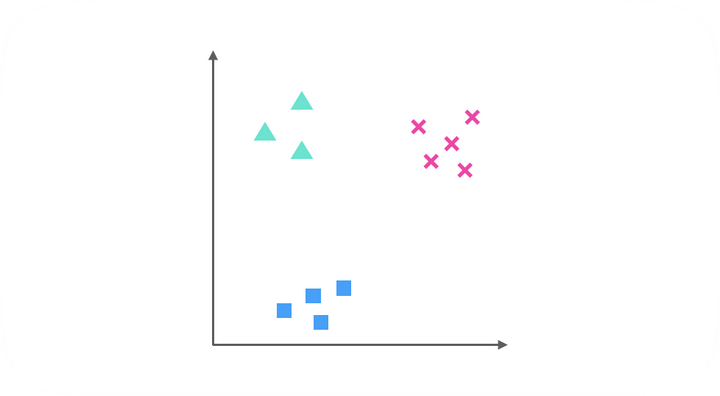
显然,有三个类别,我们可以采用Logistic回归做如下三次分类:
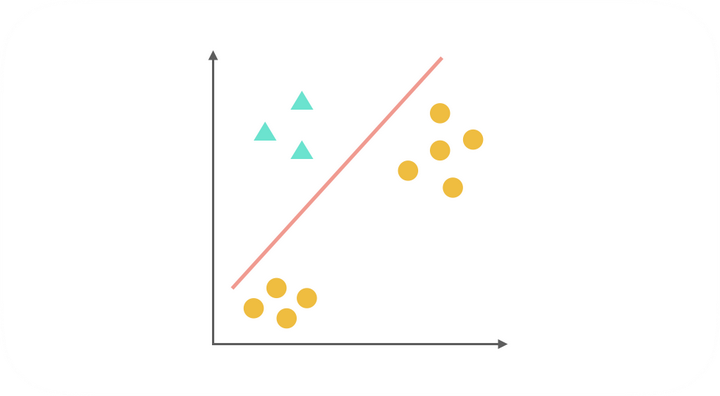
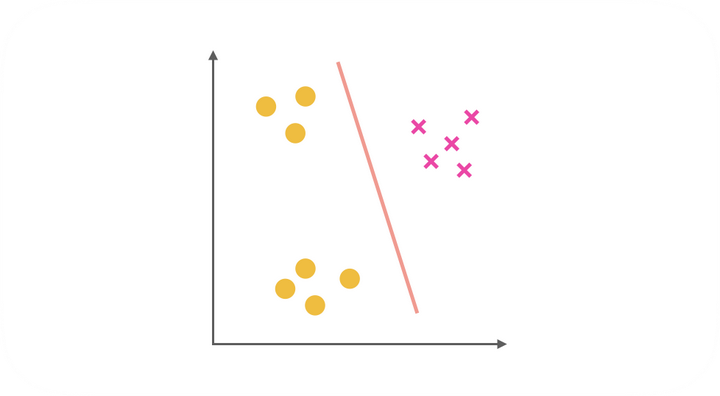

综上,得到了三种二元分类器。在预测阶段,每个分类器根据测试样本得到当前正类(即单独的上图中非黄色的一类)的概率。选择计算结果最高的分类器,其正类就可以作为预测结果。
神经网络
之前涉及的线性回归和Logistic回归都存在一个问题,即当特征数量很多时,计算负荷会变得特别大。这也是传统机器学习算法一般都具有的问题,例如在图片当中,每个像素点都是一个特征,这对于传统的机器学习是很难解决的。为了应对这种问题,科学家仿照人脑中神经元处理信息的模式,创造了神经网络。
神经网络建立在很多神经元上,每个神经元都是一个处理单元,具有一个激活函数,用来处理接收到的特征,每个神经元有多个输入(类比树突),代表着该神经元接收到了多个特征,每个神经元有一个输出(类比轴突),代表着经过激活函数处理的多种特征的合并,可以理解为对特征进行了提取和改造。其中的轴突和树突(即连接神经元的边)代表着不同的权重。
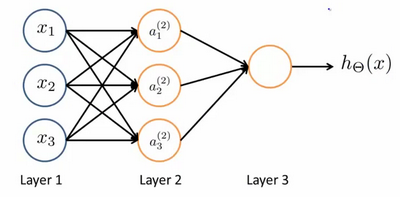
如上图是一个简单的三层神经网络,分为输入层、隐藏层和输出层,输入层就是最原始的特征,每个特征经过加权和喂到了中间层,然后中间层神经元的激活函数对其进行处理,再一次加权送到输出层,这就是前向传播的过程。其中,像之前设计偏置项一样,我们也会为每一层新添一个神经元,做为偏置项:
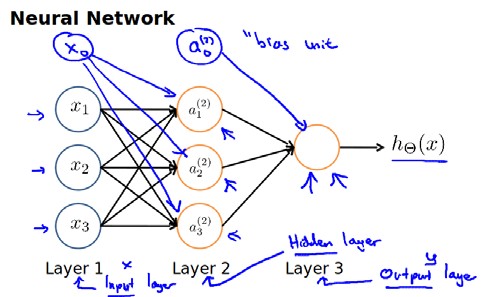
注意,每条边都代表着一个权重,那么我们的参数矩阵$\Theta$要求行数是下一层的神经元个数,列数是本层神经元个数加一。
上图所示的模型,激活单元和输出分别为:
$a_{1}^{(2)}=g(\Theta _{10}^{(1)}{x_0}+\Theta _{11}^{(1)}{x_1}+\Theta _{12}^{(1)}{x_2}+\Theta _{13}^{(1)}{x_3})$
$a_2^{(2)}=g(\Theta _{20}^{(1)}{x_0}+\Theta _{21}^{(1)}{x_1}+\Theta _{22}^{(1)}{x_2}+\Theta _{23}^{(1)}{x_3})$
$a_3^{(2)}=g(\Theta _{30}^{(1)}{x_0}+\Theta _{31}^{(1)}{x_1}+\Theta _{32}^{(1)}{x_2}+\Theta _{33}^{(1)}{x_3})$
$h_{\Theta}(x)=g(\Theta _{10}^{(2)}a_0^{(2)}+\Theta _{11}^{(2)}a_1^{(2)}+\Theta _{12}^{(2)}a_2^{(2)}+\Theta _{13}^{(2)}a_3^{(2)})$
这只是考虑一个3维的数据样本,若$X$为数据集,$\Theta$为网络参数,$a$为输出,可以得到:

实验描述
实验一
For this exercise, you will use logistic regression and neural networks to recognize handwritten digits (from 0 to 9). Automated handwritten digit recognition is widely used today - from recognizing zip codes (postal codes) on mail envelopes to recognizing amounts written on bank checks.
本次实验直接采用scipy中optimize模块中的minimize函数来对损失函数进行优化,与上一个实验不同的地方在于,同时求所有变量的梯度:
1 | # 整体同时求梯度 |
构造k个分类器的函数如下:
1 | def one_vs_all(X, y, k, learning_rate): |
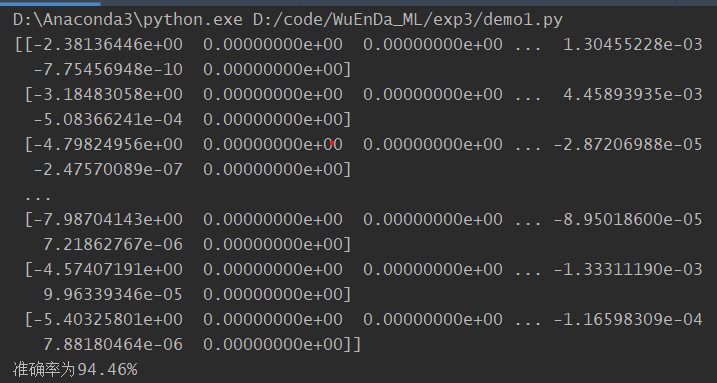
模型准确率为94.46%。
实验二
In this part of the exercise, you will implement a neural network to recognize handwritten digits using the same training set as before.Your goal is to implement the feedforward propagation algorithm to use our weights for prediction.
本次实验比较简单,只需要简单地完成前向传播的过程即可。网络参数已经训练好,关键是把握好矩阵乘法的维度和添加偏置项:

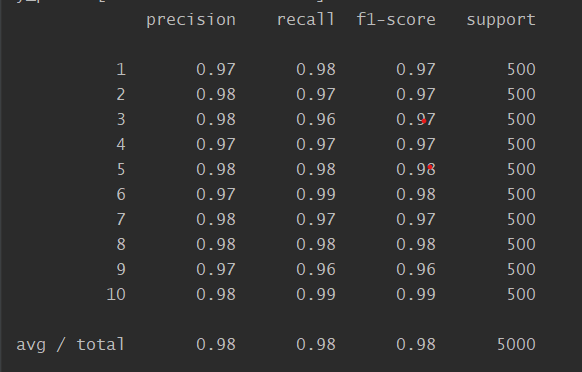
实验代码
实验一
1 | import numpy as np |
实验二
1 | import numpy as np |